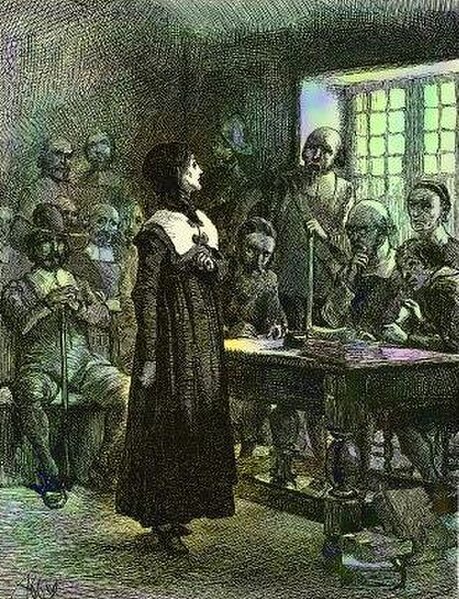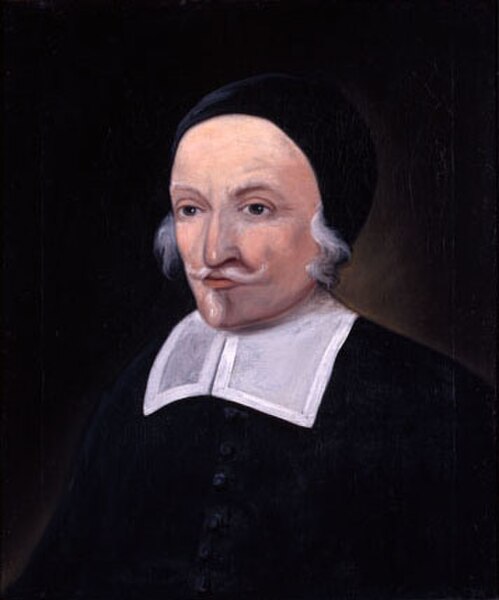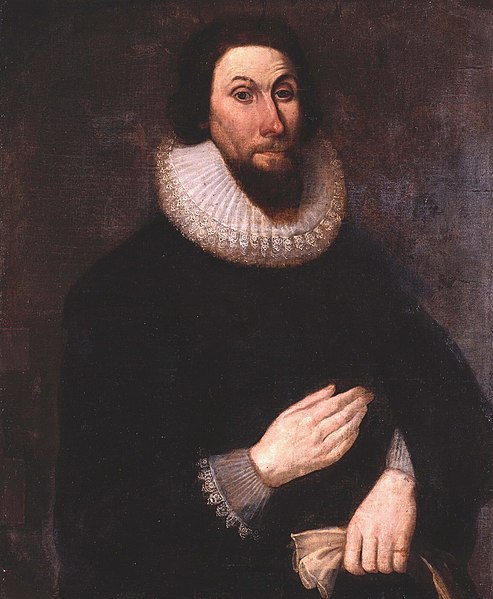Mary Dyer was an English and colonial American Puritan-turned-Quaker who was hanged in Boston, Massachusetts Bay Colony, for repeatedly defying a Puritan law banning Quakers from the colony. She is one of the four executed Quakers known as the Boston martyrs.
A 1905 portrait of Dyer being led to the gallows in Boston in 1660, painted by Howard Pyle
Anne Hutchinson, who was tried for slandering the ministers, was a friend and mentor of the much younger Mary Dyer. (Illustration by Edwin Austin Abbey.)
By signing the petition in support of the Reverend John Wheelwright (shown here), William Dyer was disarmed.
When Governor John Winthrop learned of Dyer's "monstrous birth", he had the infant exhumed and examined, then wrote a detailed report of the child's corpse.
Quakers are people who belong to the Religious Society of Friends, a historically Protestant Christian set of denominations. Members of these movements are generally united by a belief in each human's ability to experience the light within or "answering that of God in every one". Some profess a priesthood of all believers inspired by the First Epistle of Peter. They include those with evangelical, holiness, liberal, and traditional Quaker understandings of Christianity. There are also Nontheist Quakers, whose spiritual practice does not rely on the existence of God. To differing extents, the Friends avoid creeds and hierarchical structures. In 2017, there were an estimated 377,557 adult Quakers, 49% of them in Africa.
George Fox, the principal early leader of the Quakers
Quakers
George Fox, a leading early Quaker
James Nayler, a prominent Quaker leader, being pilloried and whipped








